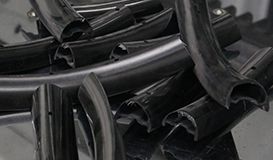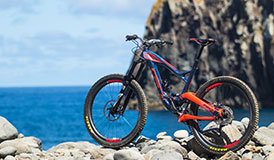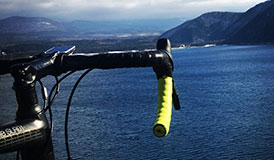Rims are advertised as Tubeless Ready (with holes) or UST (without holes). What’s the functional difference? Which one is lighter? What’s easier? We’ll dive into more detail so you can make an informed decision and purchase what suits you best.
With Holes - Tubeless Ready Rims
This is the standard rim you’ll see on 99% of bikes out there. Tubeless-ready rims have holes drilled in the rim bed (the center channel) to allow the nipple to access the spoke easily. To make the rim tubeless, apply tubeless tape to the rim bed to seal the holes. The rim is called tubeless-ready because of the bead lock design that helps to seal the tire onto the rim once inflated.
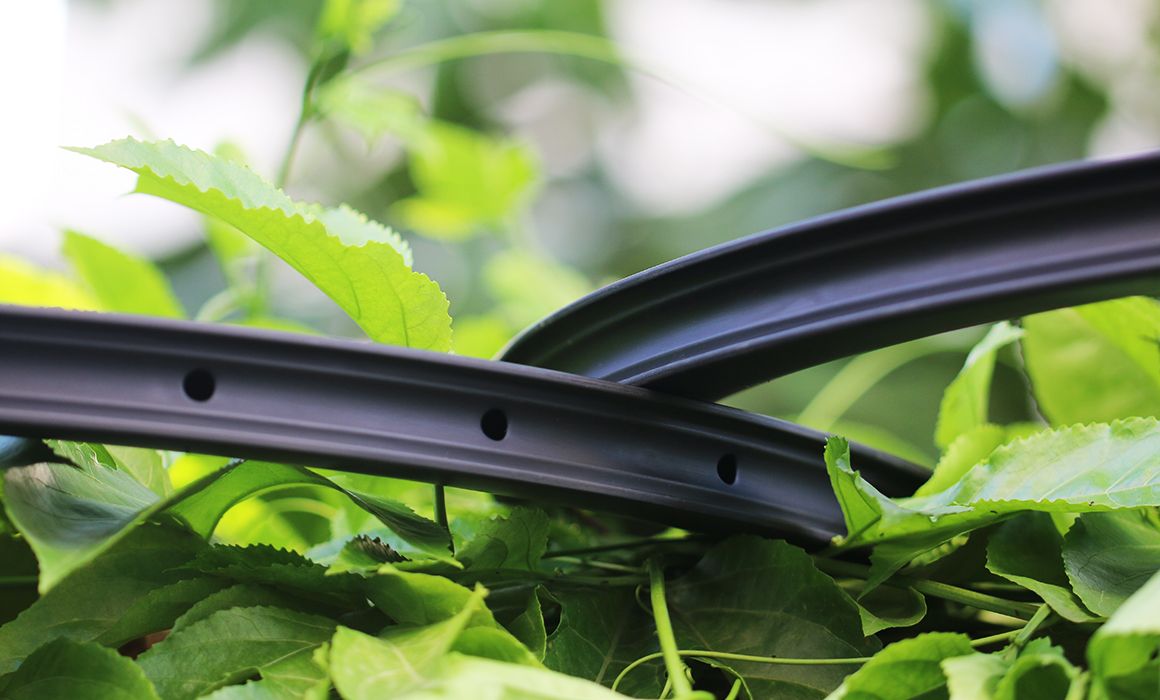
Without Holes - Tubeless Rims
Tubeless rims do not have access holes on the center channel, just a solid piece of material. The only hole you’ll see in the center channel is the valve hole. In order to build tubeless wheels, you need to feed individual nipples into the valve holes, one at a time. Then a magnet is typically used to trace the nipples to the appropriate spoke hole. There are also lacing kits available that allow you to pull the nipples through the rim with a string or wire.
This system is known as "road tubeless" and was made popular by Mavic. Some companies still refer to it as "UST style", however, UST is actually a specific interface between the tire and rim which was developed by a partnership between Mavic, Michelin, and Hutchinson. Because there are no holes in the rim bed, the tubeless tape is not required to seal the rims.
Tubeless Rims are Now Available at Light Bicycle!
Yes, you can easily order rims without holes. The feature is on the Buy & Configure option panel on the road rim/wheelset page. Please note that the rims must be 26mm or deeper in order to have enough room to maneuver the nipples inside the rims. The mountain bike pages do not have this option online, so if you’re interested in a purchase please send us an email or make a comment in the notes section at checkout.
FAQs on Tubeless and Tubeless-Ready

Which is more expensive?
There is no cost difference between tubeless-ready and tubeless when buying the rims. However, hiring a wheel builder or going to your local bike shop instead of purchasing an assembled wheelset directly from the manufacturer will likely cost more. Some builders may not have experience with this kind of build practice. Replacing spokes and nipples can be costly if you’re having your local builder/ shop do the work. If you’re doing it yourself, then all you need is time, patience and a good craft brew (or two).
Which is lighter?
A tubeless-ready rim with holes is slightly lighter than a tubeless rim on average due to the additional holes. The tubeless tape is lightweight, so the overall weight is still slightly lighter than a tubeless setup without holes in the center channel.
Tubeless (no tubes) reliability?
Tubeless rims are more reliable than tubeless-ready rims because they do not require any tape. Riders who swap tires on and off regularly will appreciate not having to worry about re-taping. You get a nice tight seal, and the only hole that you need to worry about is the valve hole.
Strength comparison?
A tubeless rim without holes in the center channel is generally going to be slightly stronger because the carbon is uninterrupted.

Do I need the tubeless sealant?
Yes, you do need sealant. Both types of rims require sealant. You can apply the sealant through the valve cap, or pour some of it into the tire before seating it, but it must be in the tire in order to create a reliable seal.
Do I need tubeless valves?
Yes, both Tubeless ready and tubeless rims require valves in order to be run without tubes. You can also run a Presta valve tube in either rim if that’s your preference or in case of an emergency. All you have to do is to pop out the tubeless valve and install the tube as usual. Be sure that the valve length is suitable for the rim. Check out our handy valve length chart on this page.
Can I use non-tubeless tires?
Yes, however, tubeless-ready tires are made for tighter tolerances which are easier to install onto our rims. Non-tubeless tires can fit tight, so be sure to use thin tape on the rims - it makes more difference than you’d think! Do not use Gorilla tape as it’s too thick. Use a mix of soap and water to help lubricate the tire can make it easier to install.
Do I need tubeless tape?
It’s only required for the tubeless-ready rims with holes.
Can I go tubed?
Yes, with either system you can use tubes. If your rim is tubeless ready (with holes), cover the holes completely with a layer of thin tape. This will prevent the tube from being cut on the edge of the spoke holes on the center channel. For lower pressure rims, we use one layer of rim tape. For higher pressure (over 50psi) two layers of tape are required.
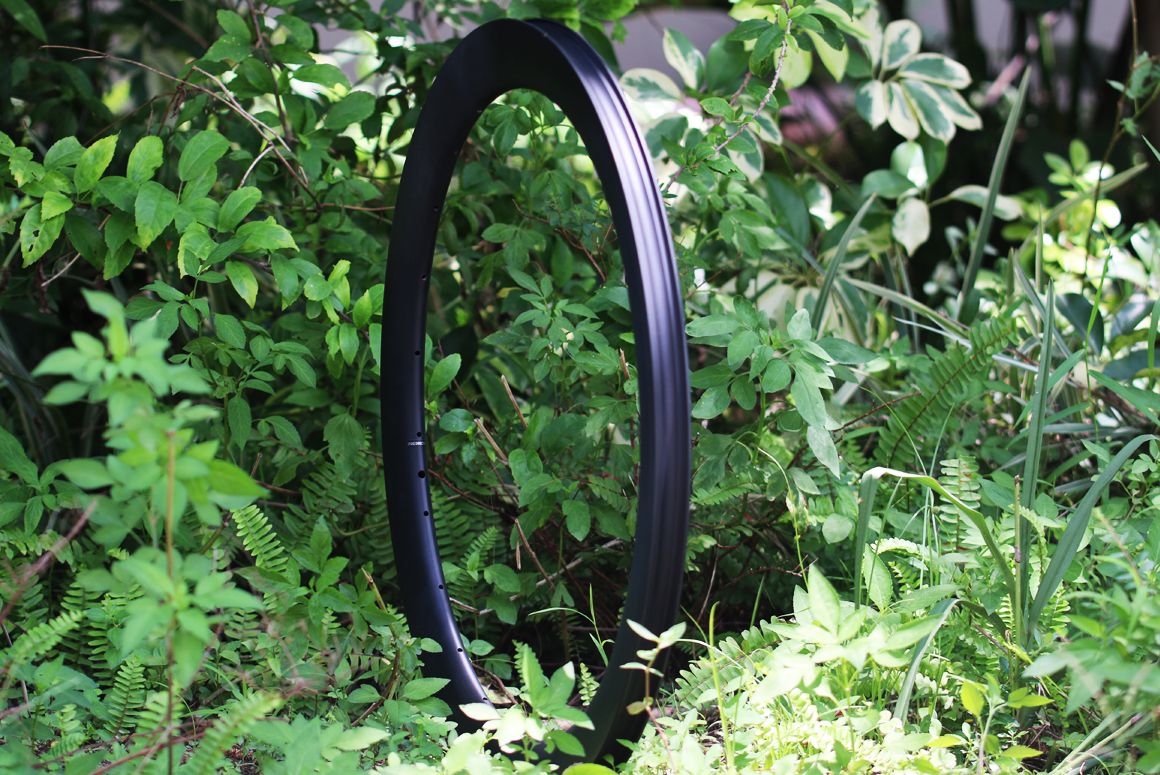
How to build a tubeless rim?
The easiest bet is to buy a magnetic piece that screws into the nipple. You’ll also need a magnet to guide the nipple along the rim. A speaker magnet will work in a pinch. We like to wrap a vinyl glove around the magnet so it doesn’t scratch the rim.
Step 1: Thread the magnetic piece into a nipple and drop it into the rim at the valve hole.
Step 2: Holding the rim sideways, use the other magnet to pull the nipple along the rim and guide it into the appropriate hole.
Step 3: Unscrew the little magnet from the nipple and thread the nipple onto the spoke. Repeat process for all nipples.
Here is an alternative method:
Step 1: Thread a new gear/shifter cable into the spoke hole, through the rim and out through the valve hole (be sure to use a new cable because the end of it should be soldered to prevent fraying).
Step 2: Slide a nipple onto the cable at the valve hole side, and then lightly clamp a cable end-cap on the end of the cable to prevent the nipple from sliding off. You’ll probably want to buy a bulk bag of cable end caps, but often you can re-use them if you are careful when re-opening the cap with pliers.
Step 3: Gently pull the cable through the rim.
Step 4: The nipple will pop out of the nipple hole
Step 5: Hold the nipple with some long nose pliers, ideally ones with a flat jaw so it doesn’t scar the nipple.
Step 6: Quickly tug the cable so the cable end-cap pops off and the cable comes out. The nipple stays in place because you’re holding it with the pliers.
Step 7: Thread the nipple onto the spoke.
Step 8: Repeat the process for the rest of the nipple holes.
Alternative to Step 7: You can wrap the exposed part of the nipple with narrow masking tape to hold it in place. This way you can get all of the nipples prepared on the rim, and then do the normal lacing process. Remove the masking tape once the nipples are threaded onto the spokes.
Is this blog helpful? If you still have any questions about tubeless and tubeless-ready rims, feel free to contact us (sales@lightbicycle.com) or leave comments below.
August 21st, 2019 | Light Bicycle
COMMENTS
M
Mike 2021/07/30
REPLY
Please leave your name here.
E-mail is required for further contact.
Please enter a message.
J
Jefferson 2020/05/21

LightBicycle 2020/05/22
REPLY
Please leave your name here.
E-mail is required for further contact.
Please enter a message.
É
Érico 2019/10/18
C
Carl 2020/01/30

LightBicycle 2020/01/31
REPLY
Please leave your name here.
E-mail is required for further contact.
Please enter a message.
Get in touch
Feel free to leave a comment if you have any questions or suggestions on our products or other issues.

Please leave your name here.
E-mail is required for further contact.
Please enter a message.
We use cookies for a better experience. Learn more.
Your Cookie Preferences
We use cookies to improve your experience on this website. You may choose which types of cookies to allow and change your preferences at any time. Disabling cookies may impact your experience on this website. You can learn more by viewing our Cookie Policy.
-
Cookies required to enable basic website functionality.
-
Cookies used to understand how the website is being used.
-
Cookies that are used to enhance the functionality of the website.
-
Cookies used to deliver advertising that is more relevant to your interests.
Aceept All Cookies
Save Preferences
Reject All Cookies
Save Preferences
Reject All Cookies
Accept All Cookies













